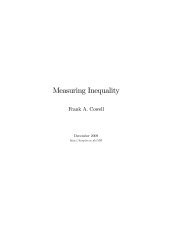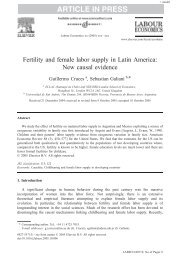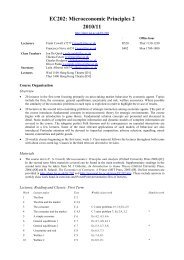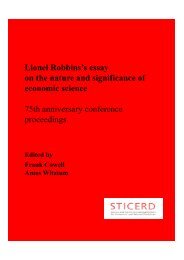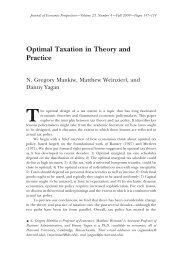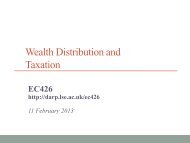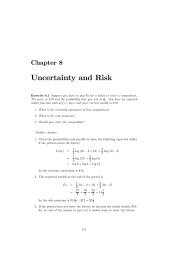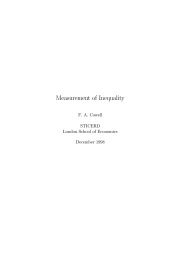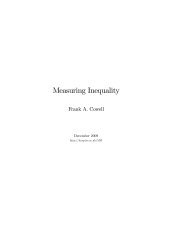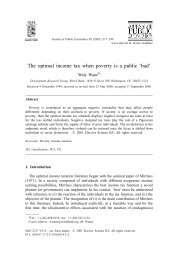Bayer, R.- C. and F. A. Cowell - DARP
Bayer, R.- C. and F. A. Cowell - DARP
Bayer, R.- C. and F. A. Cowell - DARP
Create successful ePaper yourself
Turn your PDF publications into a flip-book with our unique Google optimized e-Paper software.
The incentive to sabotage the gross pro…t of competitors by choosing aquantity higher than the Cournot quantity is still present even when collusiontakes place at the declaration stage. Symmetry is su¢ cient –but notnecessary – for this e¤ect to translate into e¢ ciency gains. In a symmetricindustry where ex-ante identical …rms collude on declarations, a relativerule leads to the same declaration behaviour as a …xed rule while the secondbene…t of a relative rule, which is greater allocative e¢ ciency, still obtains.6.2 Collusion: Production stageNow focus on the question whether the relative rule (at the second stage) hasany impact on the cartel quotas chosen at the …rst stage. Does the relativerule fare better than the …xed rule with respect to economic e¢ ciency?Suppose …rms can jointly maximise expected pro…ts by choosing quantities,anticipating individually optimal choices at the declaration stage; butsuppose they cannot cooperate at the declaration stage. Then under a relativerule …rm i will declare d i as de…ned by the condition (7) dependingon the vector of gross pro…ts realised at the production stage; under a …xedrule the relevant condition is (11). If …rms can collude on production onlythen they will choose a jointly optimal vector of quantities given the anticipateddeclarations. For simplicity consider identical …rms <strong>and</strong> concentrateon a symmetric equilibrium. An equilibrium with a production vector requiringidentical quantities for all …rms implicitly assumes that the cartelof identical …rms restricts all feasible allocations to the ones where …rmsproduce identical quotas. 19First consider the case of a …xed audit rule. Denote the gross pro…tper …rm by (so that the aggregate gross pro…t is n) <strong>and</strong> the resultingaverage declaration by d. The expected joint net pro…t for equal quotas <strong>and</strong>19 In some cases …rms might be able to increase the expected joint net pro…t by using anasymmetric allocation of quotas. But there are good reasons why …rms in a cartel wouldrefuse to produce less than other …rms. If identical …rms bargaining over the collusionsurplus have equal bargaining power they should end up with the same surplus. Anallocation that implements di¤erent quotas can only be sustained if side payments arepossible. In the more likely case that side payments are not possible due to the oversightof a control agency then the best …rms can do is to choose the best cartel agreement where…rms have identical quotas. Even if side payments are possible …rms still might refuse toproduce less than other identical …rms, as they do not want to lose market share.21



